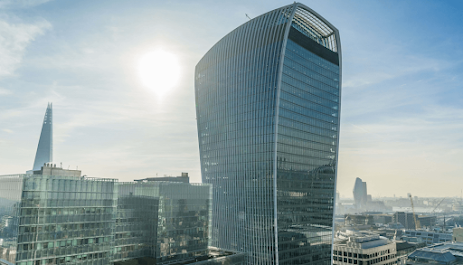LVI Associates Industry Insights - The Future of Façade Engineering
Vicente Montes-Amoros, PE, LEED AP, BD+C, Structural & Façade Engineer at Curtain Wall Design & Consulting joined Sarah to discuss the future of façade engineering, how a building can create a ‘death ray’, and how the industry can be more sustainable. Watch the video or read our short summary on the interview.
Considerations & differentiations
When deciding a façade system, there are four main aspects you must take into consideration -
Structural
Thermal
Air performance
Water Performance
It’s also important to also consider different approaches to façade engineering across varying locations. Some suppliers and manufacturers are preferred in certain markets, and it takes time to work through who and what is the preference, for example Virginia and New York are in close proximity to one another, but they use contrasting products & manufacturers, so state-to-state can also be quite different.
What is a death ray?
A death ray is an example of when a façade doesn’t perform in the way you want it to. The Fenchurch Building, nicknamed the Walkie Talkie in London experienced this, where the split in the vertical & horizontal plains, as well as the natural curve of the structure caused a concentration of sunlight in a focal point – the death ray essentially. This then reflected off the building, causing cars to melt or burn. A similar case also happened in Las Vegas at the Vdara Hotel.
Awnings and covering the glass in non-reflective film can help prevent such solar glares, and it is something façade engineers have to consider when working on projects. Technology has also been developed that predicts & quantifies the amount of energy reflected from the building back into the environment, and because of the Walkie Talkie incident, there is more demand for such technology as a result of this incident. The geometry of multiple buildings has also changed to counter causing a death ray.
What does the future of façade engineering look like?
With a focus on global warming & climate change, there is a lack of understanding when trying to bring systems & components together. For example, some believe triple glazing is the way forward for energy performance and that the energy saved after switching from double glazing would be significant. Triple glazing was tested in Washington DC within a realistic budget, and actually the assumption was not correct. There was very little distance (U Value) between double & triple glazing.
Some building owners are concerned with their buildings performance, often driven by energy consumption or bills, so there is a cost benefit to also being more sustainable too. Other building owners have a set budget & know they will sell in a number of years, therefore aren’t concerned with the buildings performance, which can make sustainable façade engineering a little more tricky. In many countries, there is legislation in place to make owners of buildings who aren’t concerned keep up with minimum standards, and contribute to better sustainability.
Façade engineering is becoming more specialised & complex, with the industry becoming stricter, meaning the overall façade systems sector will have to find ways to perform better. This will result in the industry reaching new heights than 10 years ago, and what people thought was impossible is now possible, so it is a really exciting time to be in façade engineering.


Comments
Post a Comment